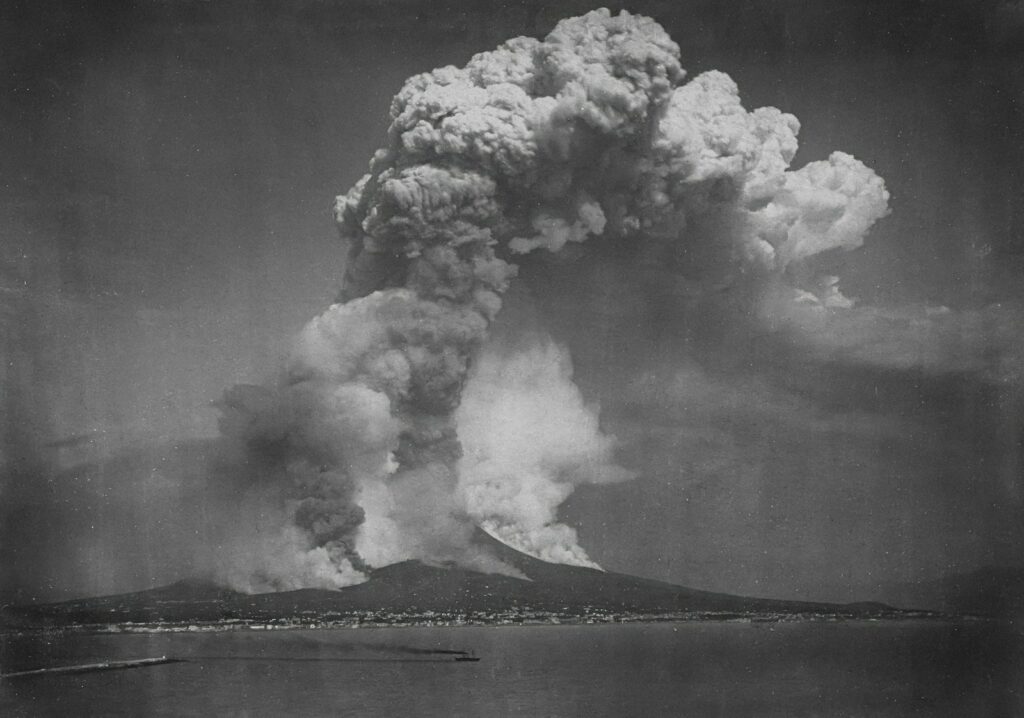
The chilling prospect of a nuclear apocalypse, once a diminishing concern from the Cold War era, has resurfaced with unsettling urgency. Warnings from leaders in the United States, Israel, Iran, and Russia regarding the potential for “all-out war,” compounded by rising tensions—such as the world awaiting a potential U.S. strike on Iran over its nuclear program—paint a stark picture of an increasingly perilous global situation. This renewed threat forces a critical reassessment of survival strategies in the face of unimaginable destruction.
For the average American, the most immediate practical concern in the event of a nuclear strike on the U.S. is the identification of potential safe havens. While not engineered to withstand the catastrophic forces of a nuclear explosion, fallout shelters provide an essential lifeline after the event, offering protection against the invisible, yet lethal radiation that follows.
Comprehending the mechanics of a nuclear event and the principles behind protective measures becomes vital when considering survival. From the blinding flash of thermal radiation, which travels at the speed of light, to the devastating pressure of blast waves and the insidious threat of radioactive fallout, each stage presents its own unique set of challenges. Gaining a thorough understanding of these phenomena, along with the infrastructure designed to mitigate their effects, is a crucial step toward navigating the complexities of nuclear fallout in a modern, unpredictable world.
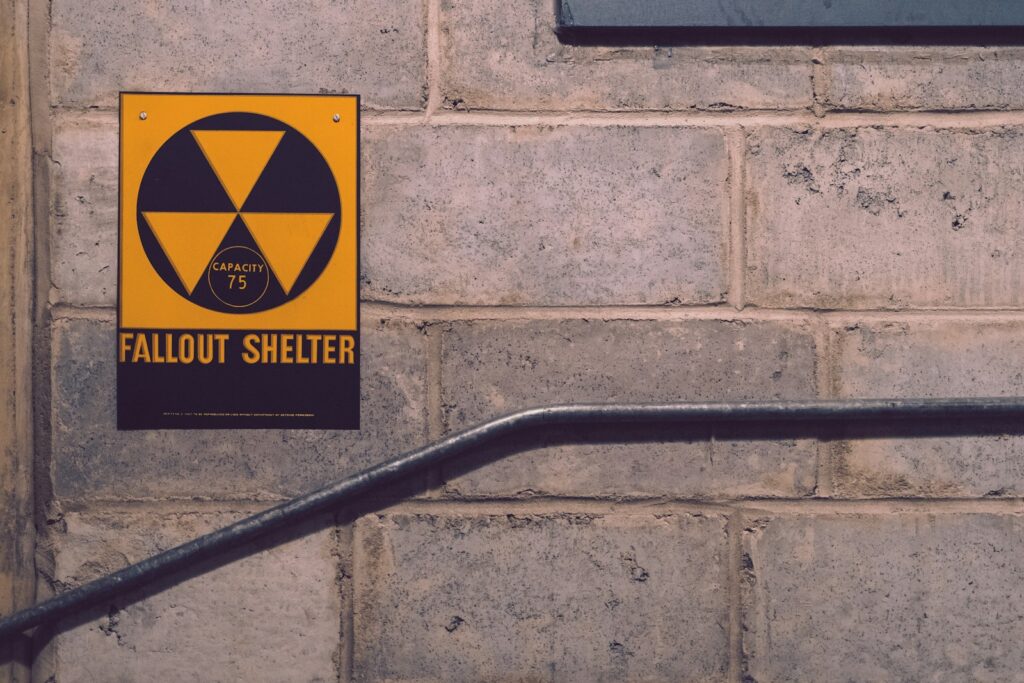
1. **Understanding the Purpose of a Nuclear Fallout Shelter**
A nuclear fallout shelter plays a critical and highly specific role following a nuclear explosion. Its primary function is to protect individuals from radioactive particles, collectively referred to as fallout, which are dispersed across the environment after a nuclear detonation. These particles pose a significant health threat.
The danger associated with fallout arises from the radiation it emits. Exposure to high levels of this radiation can lead to radiation poisoning, which can cause severe illness or death. A properly designed fallout shelter serves as a protective barrier, either absorbing or deflecting this radiation, thus safeguarding those inside from the immediate and most intense risks of radioactive contamination on the ground.
In essence, the shelter provides a refuge where individuals can wait for the fallout levels outside to decrease to safer levels. This waiting period may span weeks or even months, which makes the shelter an indispensable part of post-explosion survival planning, even though it does not offer protection from the initial explosion itself.

2. **What Fallout Shelters Can and Cannot Protect You From**
It is essential to recognize the limitations of a nuclear fallout shelter. These structures are primarily designed to protect inhabitants from radioactive fallout—the particles that descend after a nuclear detonation. By providing a substantial barrier, they significantly reduce exposure to harmful radiation, offering a viable chance of survival for those who endure the initial blast.
However, fallout shelters are not designed to withstand the immediate and catastrophic forces of a nuclear explosion. They provide no protection against the initial blast wave, which can level buildings, or the extreme heat generated at the point of detonation, which can reach temperatures hotter than the surface of the sun. Furthermore, the intense shockwaves produced by the explosion are forces that a typical fallout shelter is not equipped to endure.
The shelter’s value lies exclusively in the post-blast phase. For those who survive the thermal flash, the powerful blast waves, and the initial destruction, a fallout shelter serves as a safe haven, offering protection from the radioactive fallout that follows. It becomes particularly crucial during the critical period when radiation levels outside remain dangerously high.
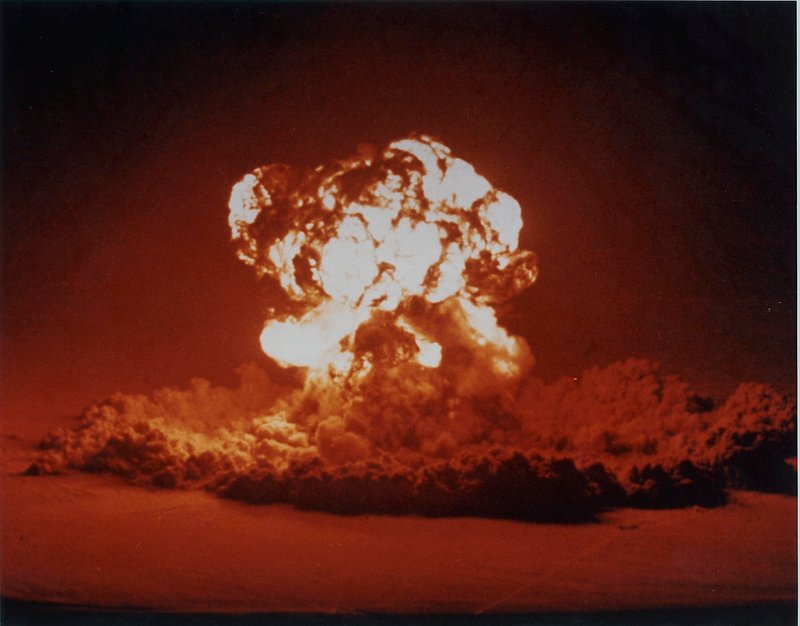
3. **The Science of the Nuclear Blast: Thermal Radiation and Heat**
One of the earliest and most immediate effects of a nuclear detonation is the release of an enormous amount of energy in the form of thermal radiation. Approximately 35 percent of the total energy from a nuclear explosion is emitted as thermal radiation. Since this radiation travels at nearly the speed of light, it is the first phenomenon that survivors, even at a distance, will encounter.
This initial burst is characterized by an intensely bright flash of light, accompanied by extreme heat. The light is powerful enough to cause flash blindness—a temporary loss of vision—even at significant distances. For a 1-megaton bomb, which is considerably larger than the Hiroshima bomb but smaller than many modern nuclear weapons, flash blindness could affect individuals up to 21 kilometers away on a clear day, and as far as 85 kilometers on a clear night.
The heat component of thermal radiation is responsible for causing burns. Mild first-degree burns could occur as far as 11 kilometers from a 1-megaton blast. More severe third-degree burns, which destroy skin tissue and cause blistering, could affect individuals up to 8 kilometers away. If third-degree burns cover more than 24 percent of the body, survival is unlikely without immediate medical intervention. The temperatures at the center of a 1-megaton explosion can reach nearly 100 million degrees Celsius—five times hotter than the sun’s core—capable of vaporizing a human body instantly. Even at a distance, factors such as clothing color can influence the effect, with white clothes reflecting some energy and darker clothes absorbing more. However, this difference has minimal impact near the explosion’s epicenter.

4. **The Science of the Nuclear Blast: Pressure Waves and Wind**
Following the initial burst of thermal radiation, a nuclear explosion generates extremely powerful blast waves. These waves result from rapid, massive changes in air pressure, as the explosion forces air away from the detonation point at high speed. The force of these waves is capable of causing significant destruction, including the crushing of objects and the collapse of even well-constructed buildings.
The intensity of these blast waves diminishes with distance but remains substantial even far from the explosion’s epicenter. For a 1-megaton bomb, the blast waves within a 6-kilometer radius would exert a force equivalent to 180 metric tons on the walls of typical two-story buildings. Winds generated by the blast could reach speeds of up to 255 kilometers per hour (158 mph). The combined pressure and wind force make these waves highly destructive to structures.
Closer to the detonation point, the forces increase dramatically. Within a 1-kilometer radius of a 1-megaton explosion, the peak pressure is four times higher, and wind speeds can reach an astonishing 756 kilometers per hour. While the human body can technically endure these pressure levels, the primary cause of death in such areas would be the collapse of buildings and other structures, which are destroyed by the immense forces.
5. **The Dangers of Nuclear Fallout and Radiation Poisoning**
Beyond the immediate destruction caused by heat and blast, a significant long-term threat of a nuclear explosion is radioactive fallout. When a nuclear weapon is detonated, especially at or near ground level, large amounts of earth and debris are sucked into the fireball, becoming intensely irradiated by the nuclear reaction.
As the fireball cools, the irradiated material condenses into particles, which are then carried by winds into the upper atmosphere. These particles, known as fallout, eventually settle back to Earth, contaminating extensive areas. The timing and distribution of fallout depend on factors such as the detonation’s altitude (air burst versus ground burst) and prevailing weather conditions. Regardless, fallout poses a serious threat to anyone in the affected zones.
Exposure to the radiation released by fallout leads to radiation poisoning. The severity of the poisoning depends on the dose received, with higher doses causing a range of debilitating symptoms and often resulting in death. Although the most intense radiation levels occur shortly after the fallout begins, the danger persists for weeks or even months until radioactive decay reduces the emission rate to safer levels. Surviving this period requires effective shielding, underscoring the crucial importance of structures capable of blocking these harmful particles.
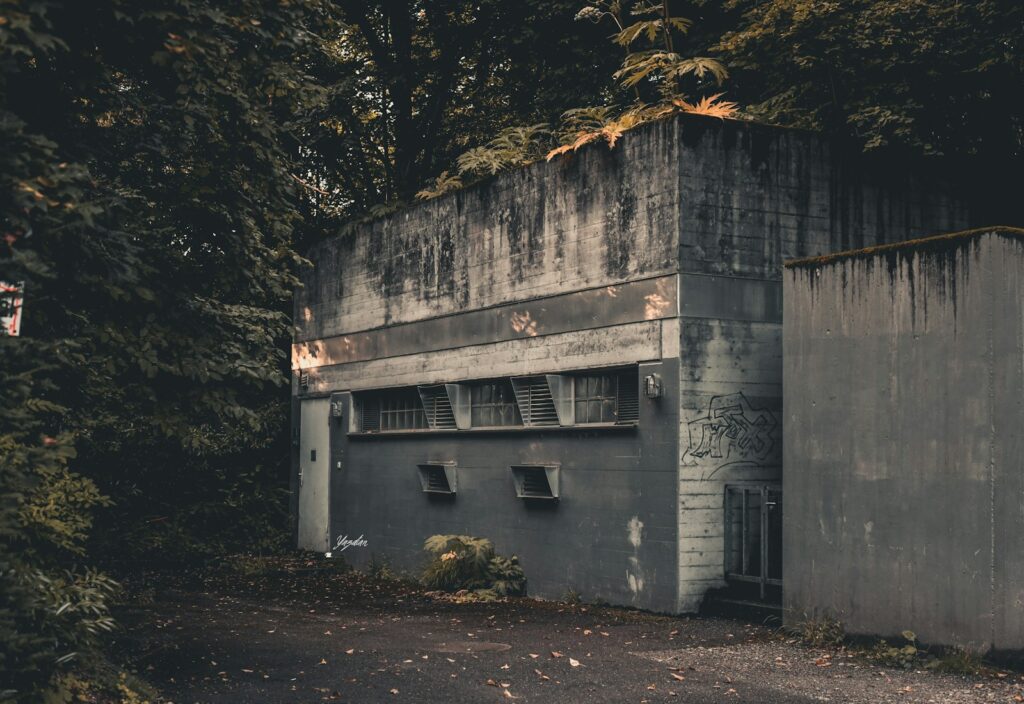
6. **The Critical Role of Shielding in a Fallout Shelter**
Shielding plays a critical role in protecting against radioactive fallout, making it the most important factor in determining the effectiveness of a fallout shelter. Radioactive particles emit various types of radiation, including gamma rays, which can penetrate deeply into materials and cause significant harm to living tissue.
An effective fallout shelter utilizes dense, thick materials to absorb this radiation before it reaches the occupants. Thick walls and a sturdy roof constructed from materials such as concrete or steel serve as essential barriers. The thicker these materials are, the more effectively they block radiation, significantly reducing the dose absorbed by those inside.
Alternatively, large amounts of less dense materials, such as dirt, can also provide effective shielding. This is why many historical and recommended fallout shelters are located underground. Being buried beneath several yards of earth places a natural barrier between the occupants and the radioactive particles settling on the surface, offering an effective form of radiation protection. The principle is straightforward: the more dense material you place between yourself and the radiation source, the better the protection.
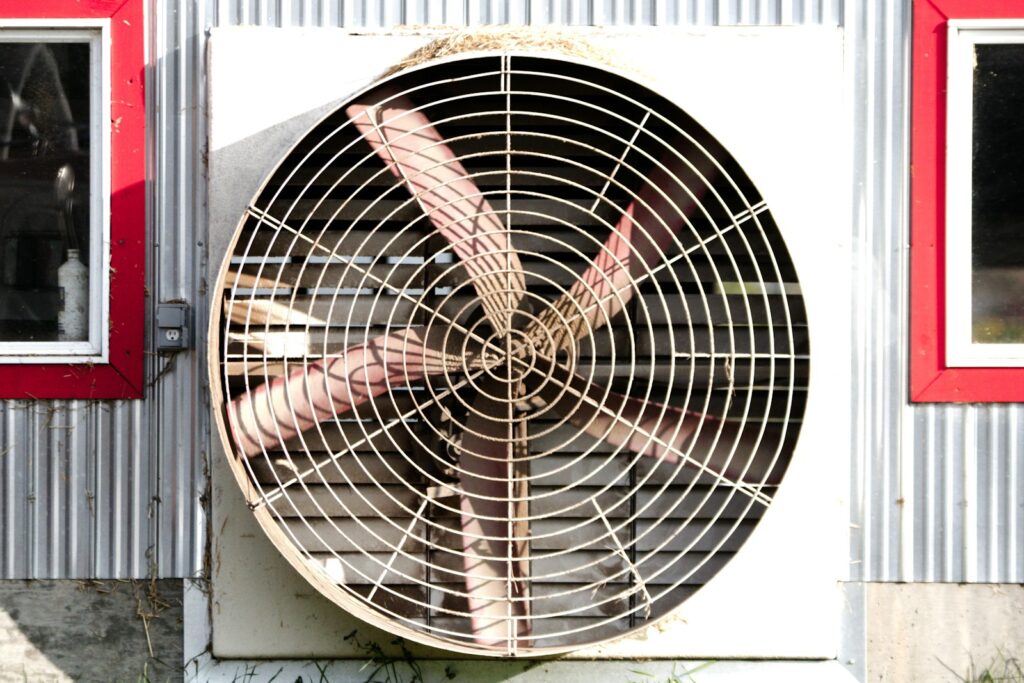
7. **Beyond Shielding: Other Essential Features of a Survival Shelter**
While shielding is the foundation of a fallout shelter, thick walls alone are insufficient for ensuring long-term survival in a contaminated environment. A functional shelter requires several other critical features to support life for the necessary duration, which experts estimate could be around 14 days until radiation levels outside drop to safer levels.
Proper ventilation, equipped with efficient filters, is essential to ensure a supply of breathable air while preventing radioactive particles from entering the shelter. Without appropriate filtration, the contaminated air from outside could render the physical shielding ineffective. Clean air circulation is crucial for maintaining the health and comfort of those inside during their confinement.
In addition to ventilation, occupants will need basic provisions and facilities. This includes sufficient food and clean water to last for weeks or even months, as waiting for the fallout to subside requires significant time. A designated waste disposal area is also necessary to maintain hygiene and prevent contamination of both the clean supplies and the living space. Furthermore, having a comfortable area for sitting or sleeping is important for the morale and well-being of individuals who may be confined to close quarters for an extended period. Together with effective shielding, these features form the basis of a truly survivable fallout shelter.
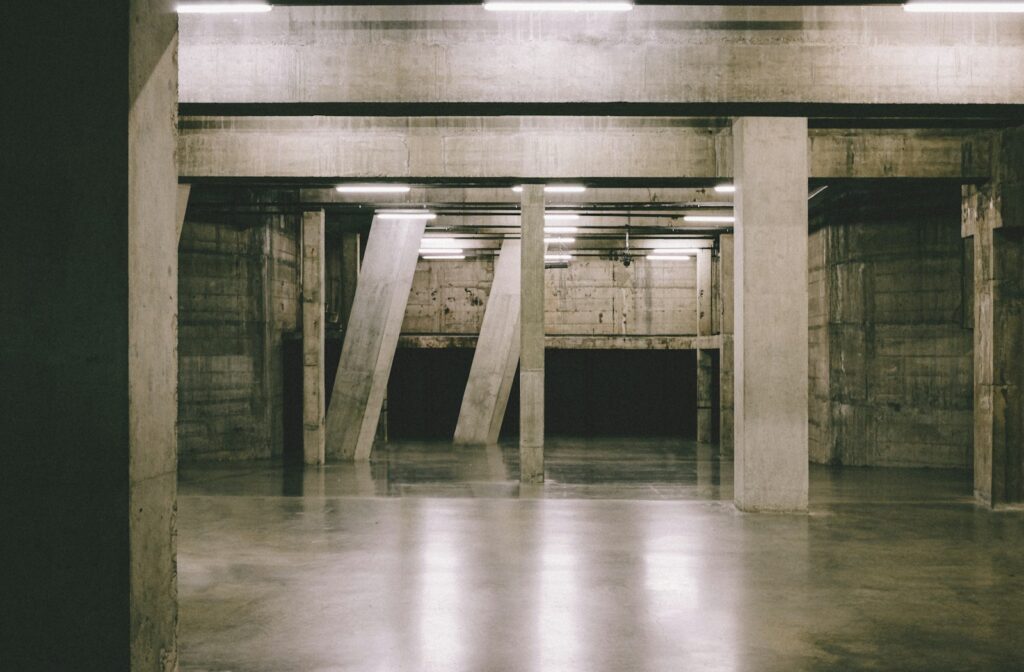
8. **The Cold War Push for Public Shelters and Their Identification**
During the intense years of the Cold War in the 1950s and 1960s, the US government initiated substantial efforts to establish a nationwide network of nuclear fallout shelters. This initiative gained significant momentum in 1961 with the launch of the National Fallout Shelter Survey. The primary goal of this project was to identify and designate public buildings, such as schools, libraries, and large basements, as potential emergency shelters capable of protecting citizens from radioactive fallout.
Cultural geographer Bradley Garrett, who has extensively studied the history and design of these bunkers, highlights their specific intended function. According to Garrett, these shelters were not designed to survive a direct nuclear hit. Instead, they were meant to provide protection for a period of approximately 14 days, deemed necessary for radiation levels outside to decay to a point where it would be safe for individuals to emerge from the shelter.
Although many shelters were established during this period, physical remnants of this Cold War-era initiative remain visible today. In major metropolitan areas, it is still possible to spot the distinctive fallout shelter symbol—three yellow triangles set on a black or dark background—on building plaques. These symbols were intended to guide the public to the nearest shelter, often located in basements, and occasionally included information about the shelter’s capacity.
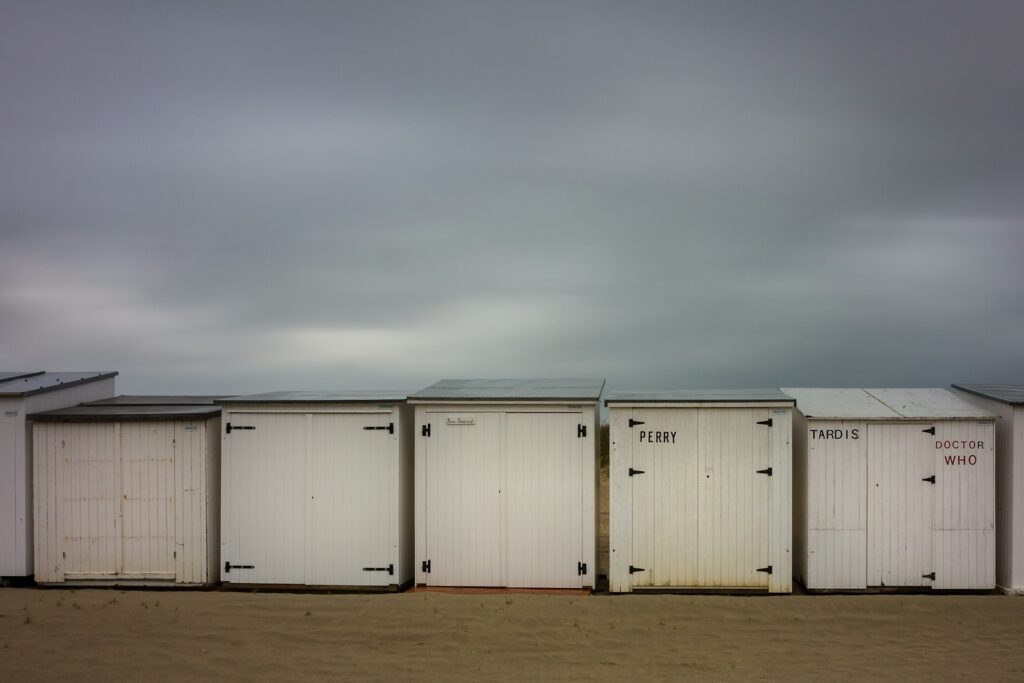
9. **The Challenge of Finding and Accessing Shelters Today**
Despite the historical efforts to create a network of public fallout shelters, accessing one in your community today is far more challenging than it might seem. Since the height of the Cold War, many of the original shelters have become defunct. As the immediate threat of nuclear war diminished during the 1980s, these shelters were often forgotten or abandoned.
Unfortunately, no public list currently exists that details the location of active, accessible shelters for everyday Americans. Many of the Cold War-era sites in major cities have since been repurposed for other uses such as storage, parking, or other functions that render them unsuitable or unavailable as shelters. Additionally, a significant number of the shelters constructed during that time were privately built by homeowners in their basements or backyards, making them inaccessible to the general public.
Compounding the problem, the canned food and medical supplies originally stored in these public shelters are almost certainly no longer present or viable. As survival expert Sean Gold points out, anyone planning to use a rediscovered shelter in 2025 would need to bring their own food and clean water supplies, sufficient to last for weeks or even months, as the waiting period for fallout to clear can be extensive.
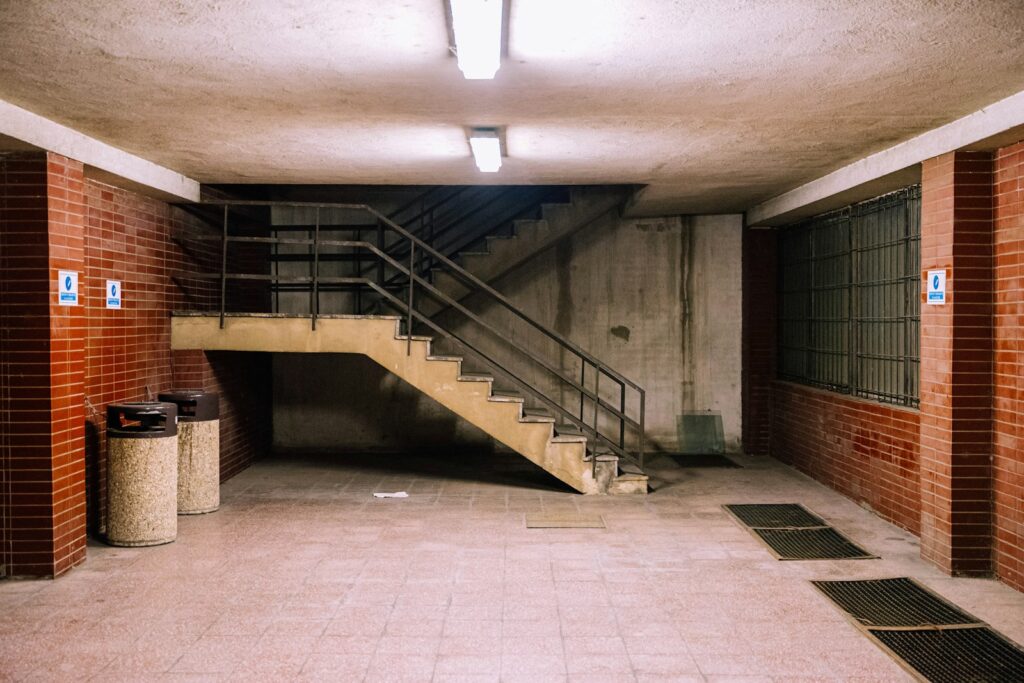
10. **Current Official Guidance: Sheltering in Place**
Reflecting the changed landscape and the challenges surrounding the old network, the Federal Emergency Management Agency (FEMA) now offers different advice to the public regarding nuclear events. Instead of directing people to seek out historical fallout shelters, current official guidance recommends that individuals shelter in place. This represents a significant shift in strategy from the Cold War era.
Reflecting the changed landscape and the challenges surrounding the old shelter network, the Federal Emergency Management Agency (FEMA) now provides different guidance to the public regarding nuclear events. Rather than directing people to seek out historical fallout shelters, FEMA now recommends that individuals shelter in place. This represents a significant shift in strategy from the Cold War era.
According to FEMA’s 2023 Nuclear Detonation Planning Guide, this shift is driven by practicality and the unpredictable nature of modern nuclear threats. The agency explained that maintaining a nationwide network of public shelters is not logistically or financially feasible for the US government in the current climate.
Instead, FEMA advises people to take refuge in basements or the most interior rooms of their homes or buildings. The focus is on finding areas with thick walls that can provide adequate shielding from radioactive fallout. While acknowledging that it may take longer for fallout to fully dissipate, the guidance recommends staying indoors for at least 24 to 48 hours during a fallout event.
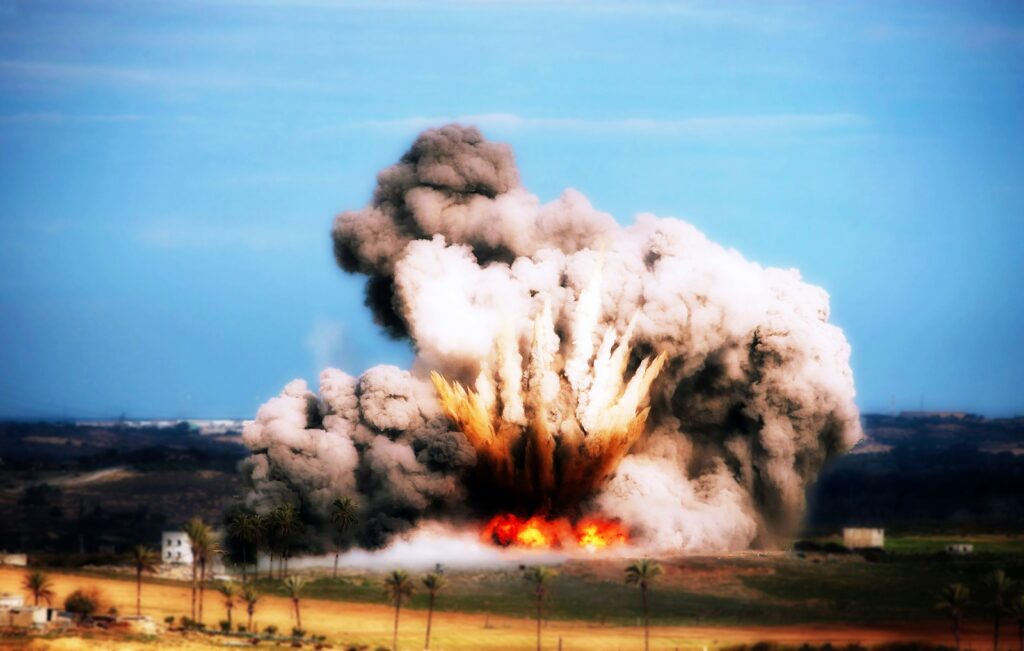
11. **The Global Nuclear Landscape: A More Complex Reality**
The chilling prospect of nuclear conflict, which seemed to fade from public consciousness after the end of the Cold War, has unfortunately returned with disturbing urgency. While films and school drills on nuclear survival largely disappeared for a time, the weapons themselves never went away. While thousands of warheads were dismantled, many others were placed into storage or remained deployed, ready for use.
Experts from the Federation of American Scientists (FAS) emphasize that today’s global nuclear landscape is far more complex and, in many ways, more precarious than it was during the Cold War, which was characterized by a clear bipolar standoff between two superpowers. The current situation involves a larger number of nations possessing nuclear weapons, coupled with more advanced technologies and faster delivery systems capable of reaching targets from a broader range of locations.
As of early 2025, nine nations possess nuclear weapons: Russia, the United States, Britain, China, France, Israel, India, Pakistan, and North Korea. These countries collectively hold just over 12,200 warheads, spread across approximately 120 sites in 14 countries worldwide. Of this total, more than 9,500 are considered militarily active or deployed, ready for potential use, with roughly 2,100 of these on high alert, capable of being launched within minutes and reaching any point on Earth in under 30 minutes.
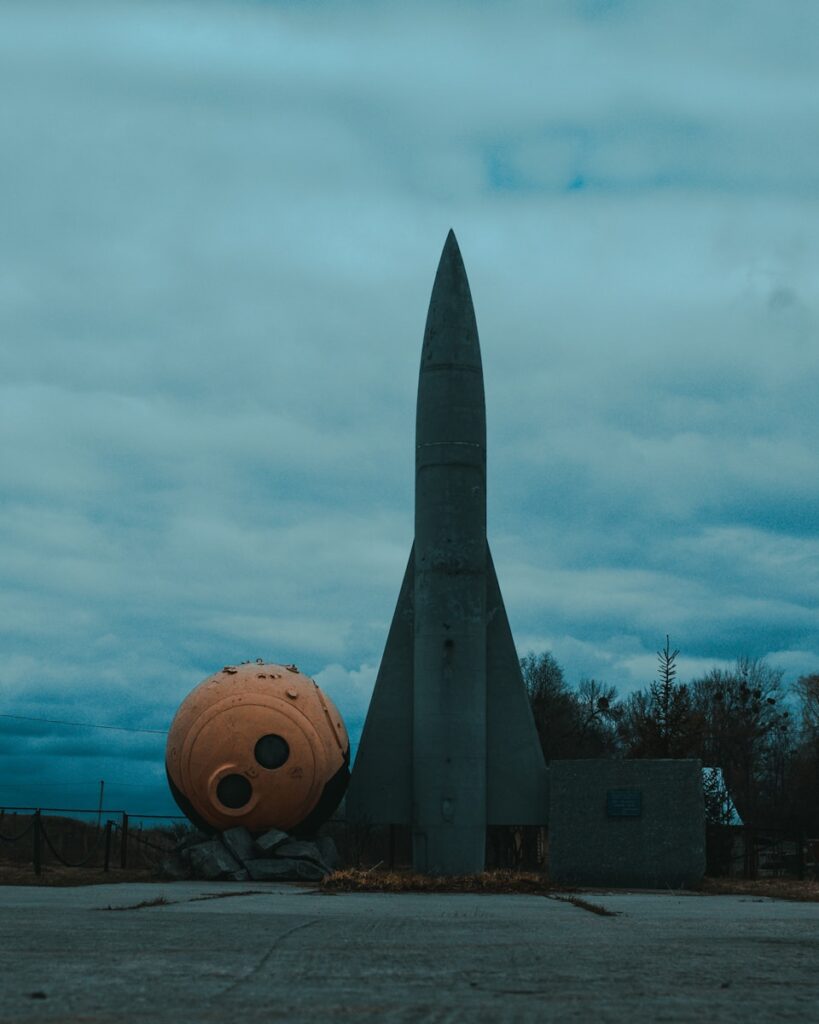
12. **The End of Treaties and the Risk of Renewed Buildup**
Historically, Russia and the United States have been the two dominant nuclear powers, and they continue to hold nearly 90 percent of the world’s nuclear warheads today. Russia currently commands the largest arsenal, closely followed by the United States. Both nations still retain thousands of warheads that are awaiting dismantlement as part of previous reduction efforts.
Both Russia and the United States are the only two countries that have ever capped their nuclear arsenals through negotiated treaties and agreements, a process that dates back to 1972. The most recent of these agreements is the New START Treaty, which was finalized in 2010. Under the terms of this treaty, both nations agreed to limit their deployed strategic nuclear weapons to 1,550 each, spread across land-based, sea-based, and air-delivery platforms.
However, the critical challenge now is that the New START Treaty is set to expire in February. Once the treaty expires, there will be no legally binding limits on the number of deployed nuclear weapons for either the United States or Russia, marking the first time in over 50 years that such constraints will be absent. Moreover, there are currently no existing treaties that impose limits on the nuclear arsenals of the other seven nuclear-armed states. This gap in arms control raises serious concerns about the possibility of a renewed and potentially rapid nuclear arms race.
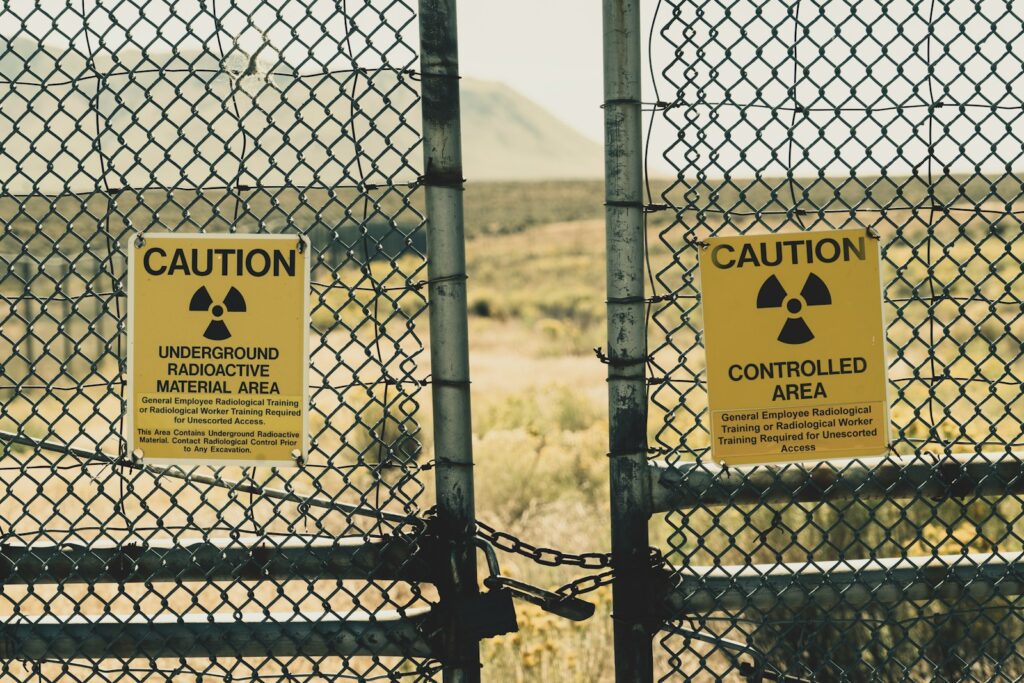
13. **The Nine-Body Problem and Intertwined Tensions**
The nuclear landscape of today is far more intricate than the Cold War’s binary standoff between two superpowers. Analysts now frequently refer to the evolving nuclear dynamics among the U.S., Russia, and China as a “three-body problem.” This concept highlights the unpredictable and escalating interactions between these three major nuclear powers, where each nation’s actions increasingly influence the others. The result could be a dangerous spiral of nuclear expansion, undermining bilateral agreements and increasing the uncertainty of strategic stability.
However, the current situation is even more complicated. It is more aptly described as a “nine-body problem,” encompassing all nuclear-armed states, each with unique motivations and strategies. The interconnected relationships among these nations create multiple flashpoints, which, in turn, influence nuclear policies in ways that defy simple explanations.
Take, for instance, the U.S.-Russia rivalry, which inherently involves NATO members like the UK and France. Both maintain their own nuclear arsenals, albeit smaller in comparison to the U.S. and Russia. This adds additional layers of complexity to the strategic calculus of deterrence. The dynamics between these powers are far from isolated, as each action has ripple effects on others.
Regional tensions further complicate this situation. China, for example, is not only focused on its strategic rivalry with the U.S. in the Pacific but also faces ongoing conflicts with Russia and a long-standing border dispute with India. The rivalry between these two nuclear-armed nations recently flared up in 2021 when they exchanged fire. Similarly, India’s nuclear strategy is driven in large part by its long-term conflict with Pakistan, further escalating the risk of nuclear proliferation in the region. This dynamic was underscored by a series of mutual strikes in May 2025, which prompted the U.S. to highlight Pakistan’s growing missile capabilities, including an intercontinental ballistic missile (ICBM) capable of reaching U.S. soil.
In addition to these nuclear powers, the situation is further clouded by the secretive nature of Israel’s suspected nuclear program. Satellite imagery has shown recent construction at the Dimona nuclear site, and Israeli leaders, including Prime Minister Benjamin Netanyahu, have frequently used the country’s nuclear capability as a backdrop for strategic warnings.
The web of nuclear tensions is vast and fraught with complexity. It involves not just military calculations but deeply entwined geopolitical rivalries, all of which have the potential to lead to unpredictable and dangerous consequences.

14. **The Dawn of the Next Nuclear Age: New Technologies and Risks**
Disturbingly, many dangerous concepts from the Cold War era are being revived and updated. Notably, the idea of lower-yield nuclear weapons designed for “limited” nuclear wars is resurfacing, along with the development of powerful blockbuster missiles capable of targeting multiple sites simultaneously. Additionally, entire classes of missiles that were once banned and dismantled under arms control treaties are reportedly being redeployed.
In parallel with these revivals, nations are aggressively testing and developing entirely new methods of delivering nuclear weapons, marking the dawn of what is being referred to as the “next nuclear age.” These new systems include nuclear-powered cruise missiles, capable of traveling for days before striking their targets, underwater unmanned nuclear torpedoes that could stealthily approach coastal regions, and fast-flying, highly maneuverable glide vehicles designed to evade existing missile defense systems.
Moreover, the possibility of placing nuclear weapons in space is becoming more plausible, with the potential to target satellites or even strike terrestrial targets without warning. While countries such as the U.S., Russia, and China are simultaneously working on advanced missile defense systems, including ambitious technologies like the U.S. ‘Golden Dome,’ the offensive weapons being developed are often specifically designed to circumvent these defensive measures, creating a dangerous cycle of escalation in the arms race.
Adding to the complexity, the integration of artificial intelligence into military strategies, early warning systems, and detection mechanisms for nuclear arsenals introduces further uncertainty. While assurances have been made that a “human will remain in the loop,” the reliability of decision-making during a crisis remains a significant concern.
The destructive potential held by the nine nuclear powers is staggering, collectively equivalent to over 4.8 trillion pounds of TNT, or more than 145,000 times the force of the bomb dropped on Hiroshima. A single U.S. strategic submarine can carry enough warheads to annihilate an entire nation. The detonation of just a few hundred nuclear weapons could inject enough soot and debris into the atmosphere to block sunlight, cool the planet, disrupt crop growth, and possibly trigger a global “nuclear winter,” leading to widespread famine. This catastrophic scenario has been explored by experts like Annie Jacobsen and other scientists.
Understanding the science behind these threats, the evolving global landscape, and the practical realities of survival strategies—from historical shelters to modern guidance systems—remains an essential yet sobering responsibility in the face of an increasingly perilous nuclear age. The ability to navigate these dangers, should the unthinkable occur, hinges on preparedness, knowledge, and, possibly, a stroke of luck. to navigate these dangers, should the unthinkable occur, relies heavily on knowledge, preparedness, and perhaps, a measure of luck.

